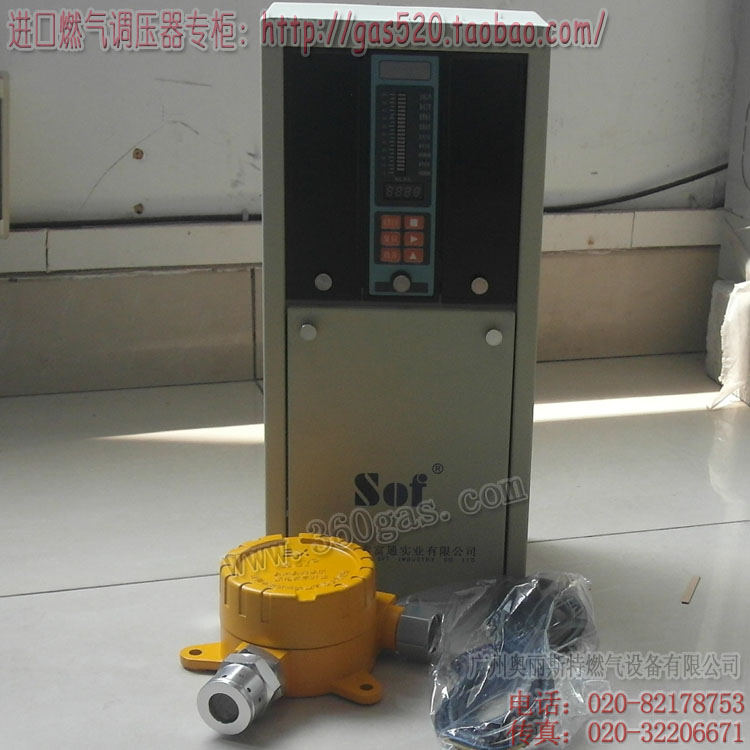位置:首页 > 燃气资讯 > Waste Management B
Waste Management Builds New Biomethane Facility for Fleet Refueling
浏览次数 697 , 日期 2013-10-25 , 燃气设备 加入收藏
Waste Management, provider of comprehensive waste management services in North America, is building a facility that will create pipeline-ready natural gas from its Milam Landfill in Fairmont City, Illinois. The processed renewable natural gas (biomethane) will be injected into the pipelines of Ameren Illinois for withdrawal at other locations, including some Waste Management facilities. Once there, it will be used to fuel truck fleets and other equipment that run on compressed natural gas, or CNG.
Waste Management is calling the plant the Renewable Natural Gas Facility and expects it to begin delivering gas to the pipelines in late summer 2014.
“Ameren Illinois applauds Waste Management for deploying an innovative technology to fuel their fleet,” said Richard J. Mark, president and CEO of Ameren Illinois at the groundbreaking ceremony. “This is a first-of-its-kind collaboration for Ameren Illinois to facilitate the transportation of clean, renewable natural gas through our pipelines to the U.S. gas distribution grid.”
Like wind and solar, landfill gas is a renewable source of energy endorsed by the U.S. Environmental Protection Agency as an alternative to fossil fuels. It’s produced as waste naturally decomposes inside a landfill. Once captured, the gas is filtered and compressed and can be used to fuel an engine or a turbine to generate electricity. At the new Renewable Natural Gas Facility, the landfill gas will be further processed to produce pipeline-quality natural gas.
“This type of project represents an important alternative source of renewable energy that we provide straight from our landfills,” said Paul Pabor, vice president of renewable energy for Waste Management. “While we are well known as a waste and recycling company, we’re also an energy company.”
At the landfill, on-site emissions will be reduced by the Renewable Natural Gas Facility. Since the gas will be treated, rather than burned onsite, Waste Management anticipates about a 60 percent reduction in emissions of carbon monoxide, nitrogen oxides, and particulate matter.
“This project is not only the first of its kind in Illinois but will be a model for environmental sustainability by reducing vehicle emissions, greenhouse gases and creating a renewable source of fuel. As a major Illinois employer and service provider, Waste Management is demonstrating that good environmental practices are also good business,” said Lisa Bonnett, director of the Illinois Environmental Protection Agency.
Pabor said the facility will be designed to process approximately 3,500 standard cubic feet per minute (SCFM) of incoming landfill gas, equivalent to 105 million British thermal units per hour. This is as much gas as it takes to fuel about 400 of Waste Management’s CNG collection trucks each day and represents more than ten percent of the natural gas that is used in Waste Management’s entire existing CNG fleet. Waste Management of Illinois currently has more than 100 CNG trucks in its fleet displacing about one million gallons per year of diesel fuel.
“For every diesel truck older than a 2006 model that we replace with a natural gas one, we eliminate 22 metric tons of greenhouse gas emissions per year,” Pabor said. “These trucks also emit nearly zero air particulates, cut greenhouse gas emissions by nearly 25 percent and are far quieter than their predecessors.”
The Milam Renewable Natural Gas Facility will be the company’s third plant to convert landfill gas to natural gas. In California, Waste Management has collaborated in the world’s largest plant to convert landfill gas to ultra-low-carbon liquefied natural gas (LNG). The greenhouse gas emissions associated with this fuel are more than 80 percent lower than those of diesel. It’s the cleanest fuel available for heavy-duty trucks today. The facility produces 13,000 gallons of LNG per day and helps to power the company’s fleet in California. In Ohio, the company processes about 3,000 SCFM of landfill gas and delivers it to a natural gas pipeline.
Waste Management is calling the plant the Renewable Natural Gas Facility and expects it to begin delivering gas to the pipelines in late summer 2014.
“Ameren Illinois applauds Waste Management for deploying an innovative technology to fuel their fleet,” said Richard J. Mark, president and CEO of Ameren Illinois at the groundbreaking ceremony. “This is a first-of-its-kind collaboration for Ameren Illinois to facilitate the transportation of clean, renewable natural gas through our pipelines to the U.S. gas distribution grid.”
Like wind and solar, landfill gas is a renewable source of energy endorsed by the U.S. Environmental Protection Agency as an alternative to fossil fuels. It’s produced as waste naturally decomposes inside a landfill. Once captured, the gas is filtered and compressed and can be used to fuel an engine or a turbine to generate electricity. At the new Renewable Natural Gas Facility, the landfill gas will be further processed to produce pipeline-quality natural gas.
“This type of project represents an important alternative source of renewable energy that we provide straight from our landfills,” said Paul Pabor, vice president of renewable energy for Waste Management. “While we are well known as a waste and recycling company, we’re also an energy company.”
At the landfill, on-site emissions will be reduced by the Renewable Natural Gas Facility. Since the gas will be treated, rather than burned onsite, Waste Management anticipates about a 60 percent reduction in emissions of carbon monoxide, nitrogen oxides, and particulate matter.
“This project is not only the first of its kind in Illinois but will be a model for environmental sustainability by reducing vehicle emissions, greenhouse gases and creating a renewable source of fuel. As a major Illinois employer and service provider, Waste Management is demonstrating that good environmental practices are also good business,” said Lisa Bonnett, director of the Illinois Environmental Protection Agency.
Pabor said the facility will be designed to process approximately 3,500 standard cubic feet per minute (SCFM) of incoming landfill gas, equivalent to 105 million British thermal units per hour. This is as much gas as it takes to fuel about 400 of Waste Management’s CNG collection trucks each day and represents more than ten percent of the natural gas that is used in Waste Management’s entire existing CNG fleet. Waste Management of Illinois currently has more than 100 CNG trucks in its fleet displacing about one million gallons per year of diesel fuel.
“For every diesel truck older than a 2006 model that we replace with a natural gas one, we eliminate 22 metric tons of greenhouse gas emissions per year,” Pabor said. “These trucks also emit nearly zero air particulates, cut greenhouse gas emissions by nearly 25 percent and are far quieter than their predecessors.”
The Milam Renewable Natural Gas Facility will be the company’s third plant to convert landfill gas to natural gas. In California, Waste Management has collaborated in the world’s largest plant to convert landfill gas to ultra-low-carbon liquefied natural gas (LNG). The greenhouse gas emissions associated with this fuel are more than 80 percent lower than those of diesel. It’s the cleanest fuel available for heavy-duty trucks today. The facility produces 13,000 gallons of LNG per day and helps to power the company’s fleet in California. In Ohio, the company processes about 3,000 SCFM of landfill gas and delivers it to a natural gas pipeline.








